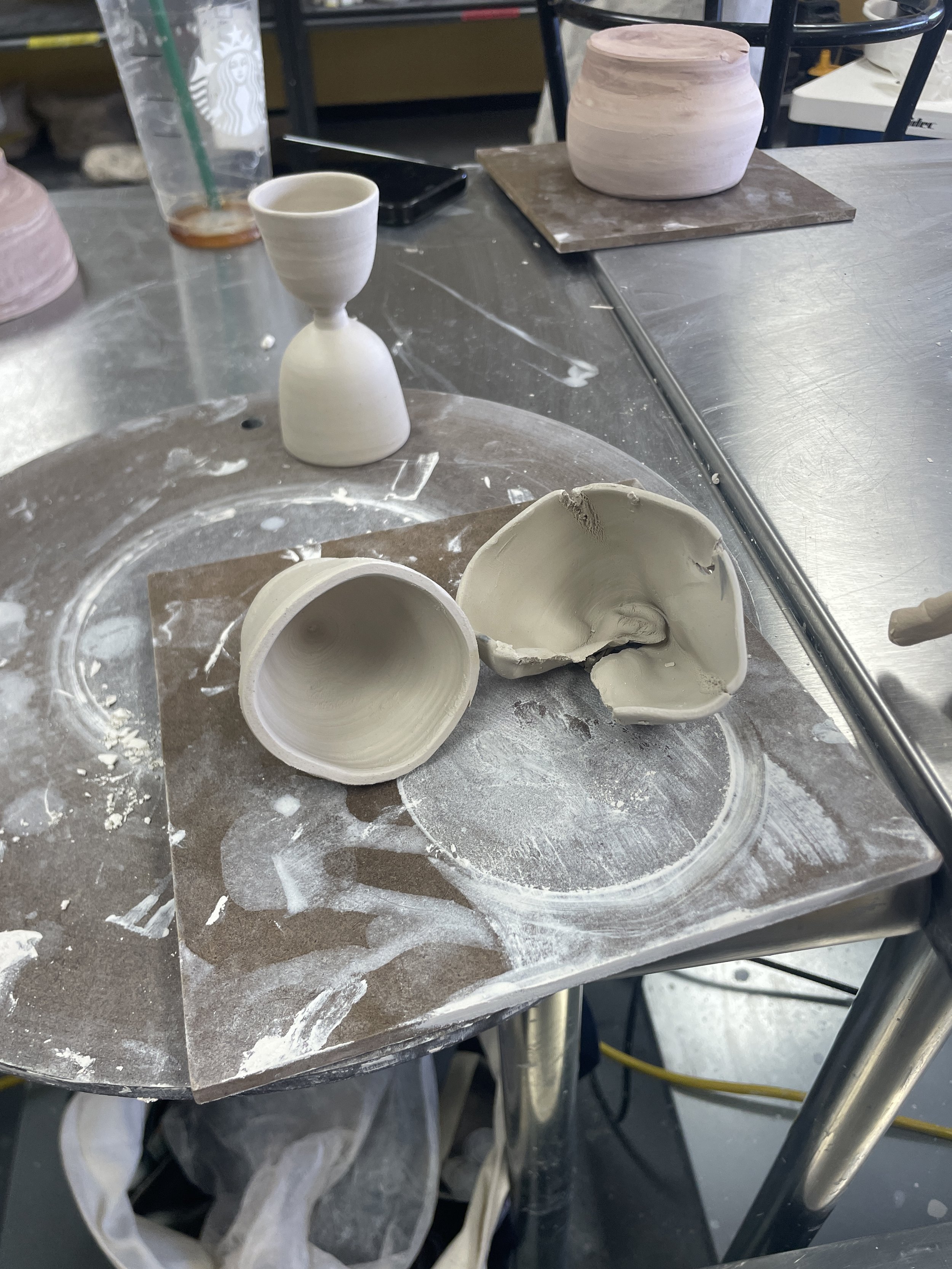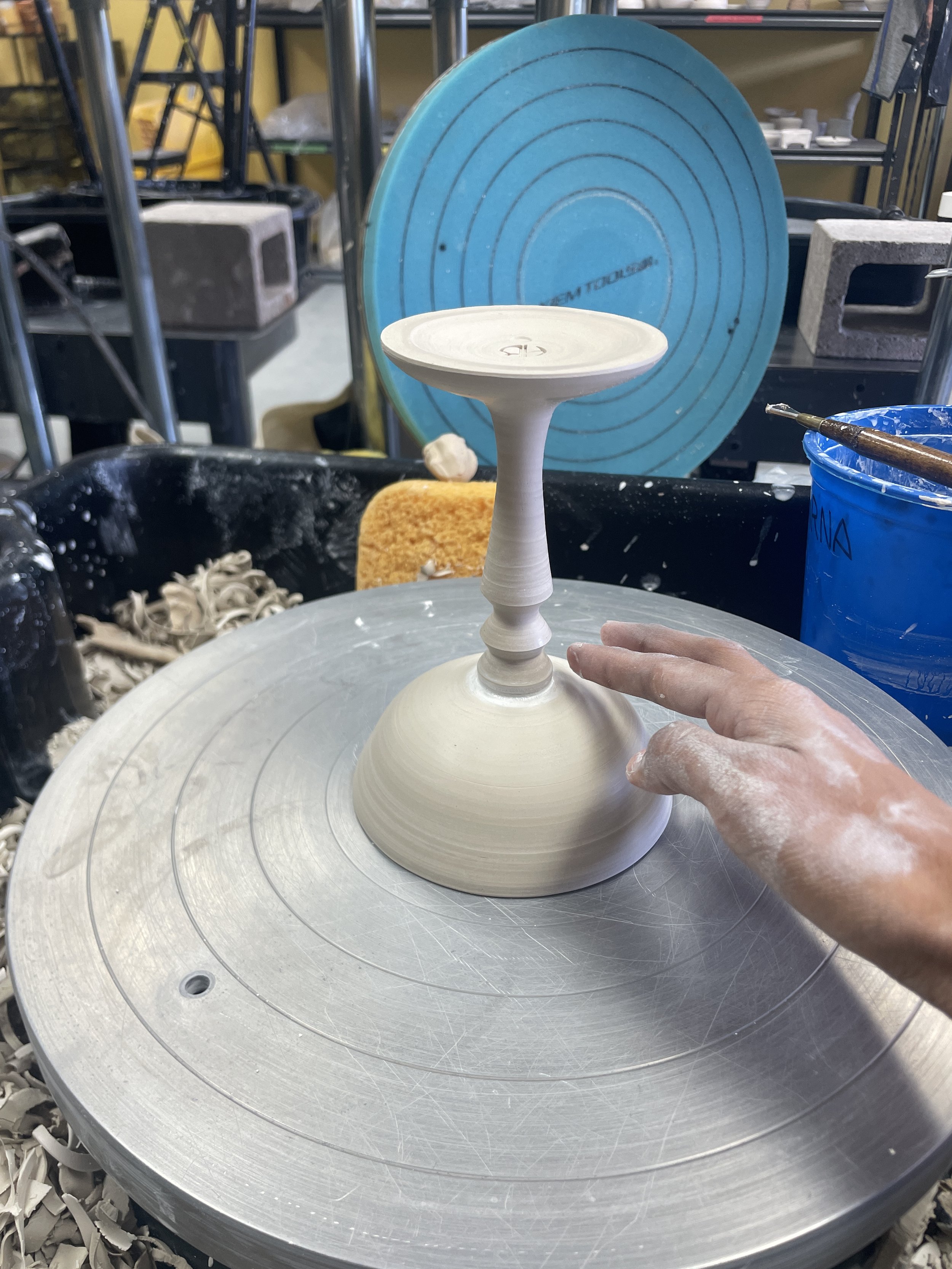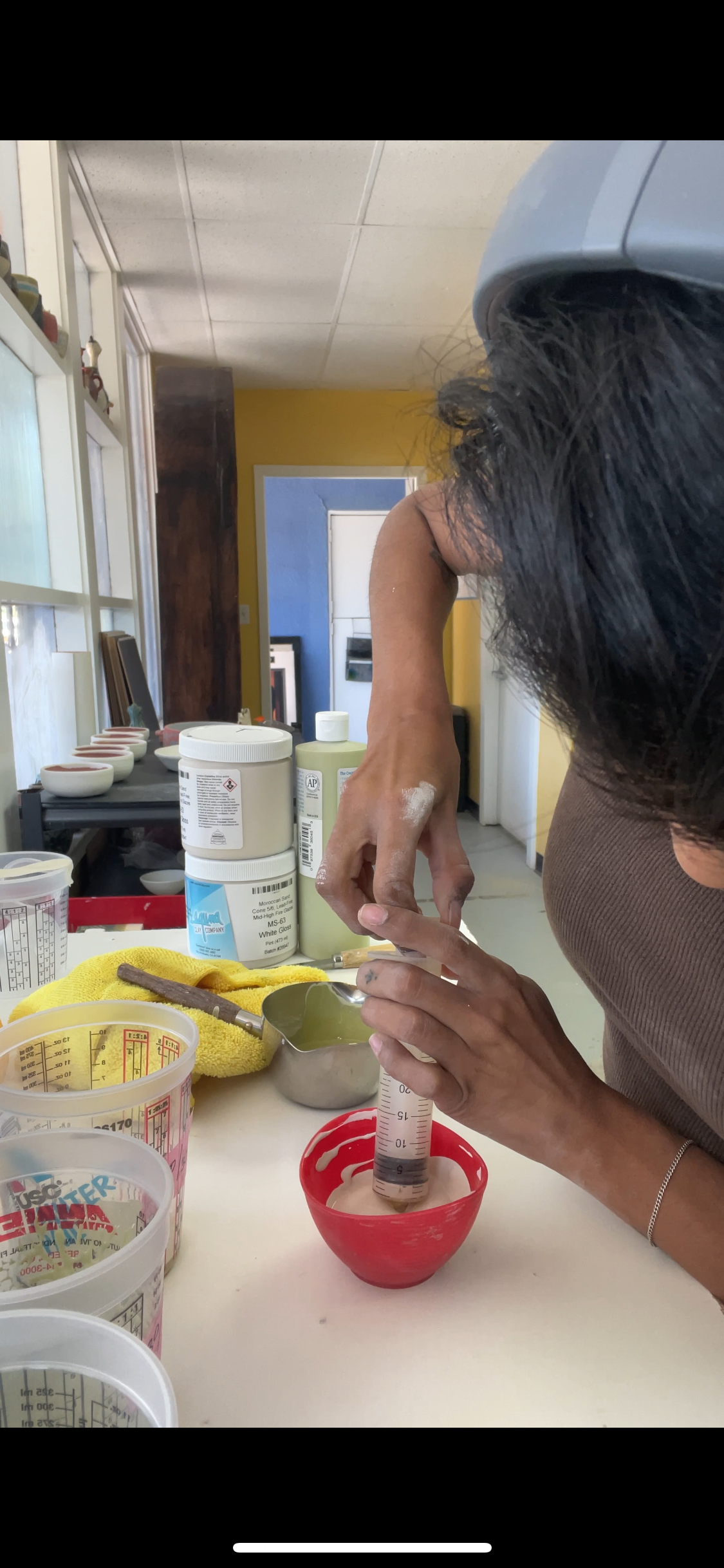Drink Me
Prototyping
2024
Ceramics
Wheel
What if HF Coors had a ceramic barware collection?
Coors
Porcelain Co.
1920
Coors
Ceramics
1986
HF Coors China Company
1925
Coorstek
2000
Herold expirimented with local clay deposits, which were known to withstand high temperatures, to produce porcelain labware, dinnerware and art.
Herman F. Coors became manager in 1916 after the company started to produce chemical lab ware. During the Prohibition, Coors Porcelain kept the brewery afloat with fine china and cookware.
He left in 1925 to start H.F. Coors China Company, which continues to manufacture dishware for restaurants and institutions to this day.
John
Herold
John Herold was a trained German ceramicist who immigrated to USA in the 1890s.
He founded the Herold China & Pottery Company in 1910 with help from Adolph Coors, who provided a building in Colorado (formerly the Colorado Glass Works) for ceramic production.
Herold China &
Pottery Company
1910
https://www.coorstek.com/en/about/history/
Dinnerware
R&D
Benefits of
Ceramic dinnerware:
Durable and wear-resistant
Has good chemical resistance
Has a high thermal insulation
Ceramic
barware could:
Withstand mixing
Be reistant to liquids of different ph
Can maintain temperature longer
Piece List
I sketched my planned pieces and refined them to be cohesive as a set. I wanted to make 3 types of glassware, a carafe, a mixing glass, a measuring jigger, a muddler and 2 rimming dishes with a juicer.
Vibe Check
Fantastical
Elegant
+
+
Functional
Throwing
Greenware
I made a production plan to keep track of my timeline so I could accomplish the throwing, trimming, drying and glazing of my collection in 4 weeks.
Trimming
Shrinkage
I calculated the porcelain's shrinkage rate and used a shrinkage bar to determine the clay needed for each piece before firing to its final size.
Stemware
This was definitely the most challenging part because I wanted to replicate thin stemware that is usually made of glass out of porcelain.
The stems had to be trimmed in stages so it wouldn’t be sheared off. I really tested its limits to achieve as skinny of a stem with my abilities.
Attaching
To minimize damage while drying, I brushed wax on the joints and wrapped the pieces tight to dry them slowly.
Oops! Too dry!

Bisqueware
Glazing
The idea was to create a gradient from green to white across the collection (very Pincus inspired).
I couldn’t decide on how I wanted to glaze my collection so I made digital mockups to help me visualize what it could look like.
Something I didn’t know could be an issue was pyroplasticity during the glaze firing. The weight of the drinkware caused the stem to lean over, giving more Alice in Wonderland than Elvish elegance. Maybe a different kiln setup could prevent this issue.
Glazed
↓
Fired

















































